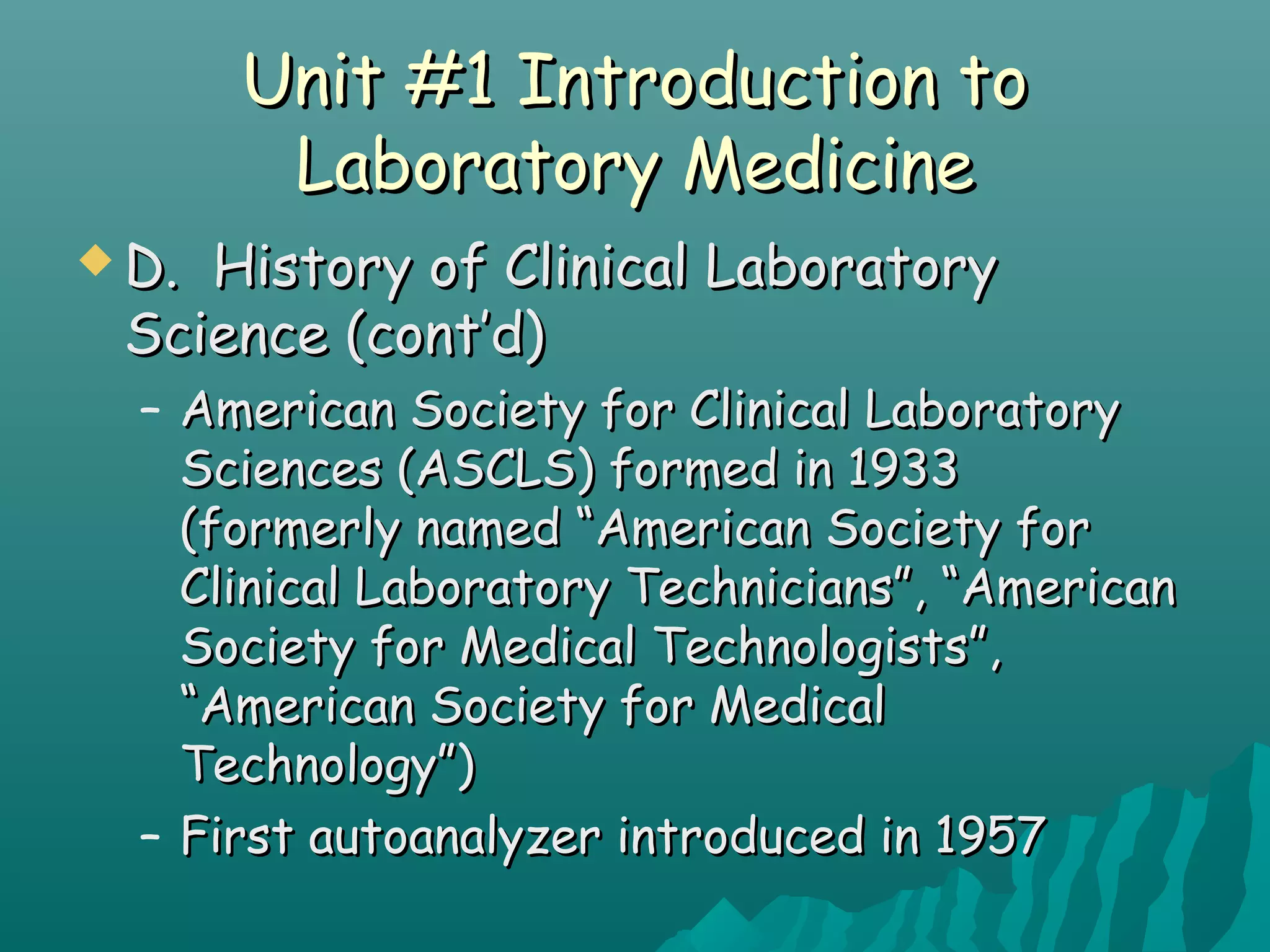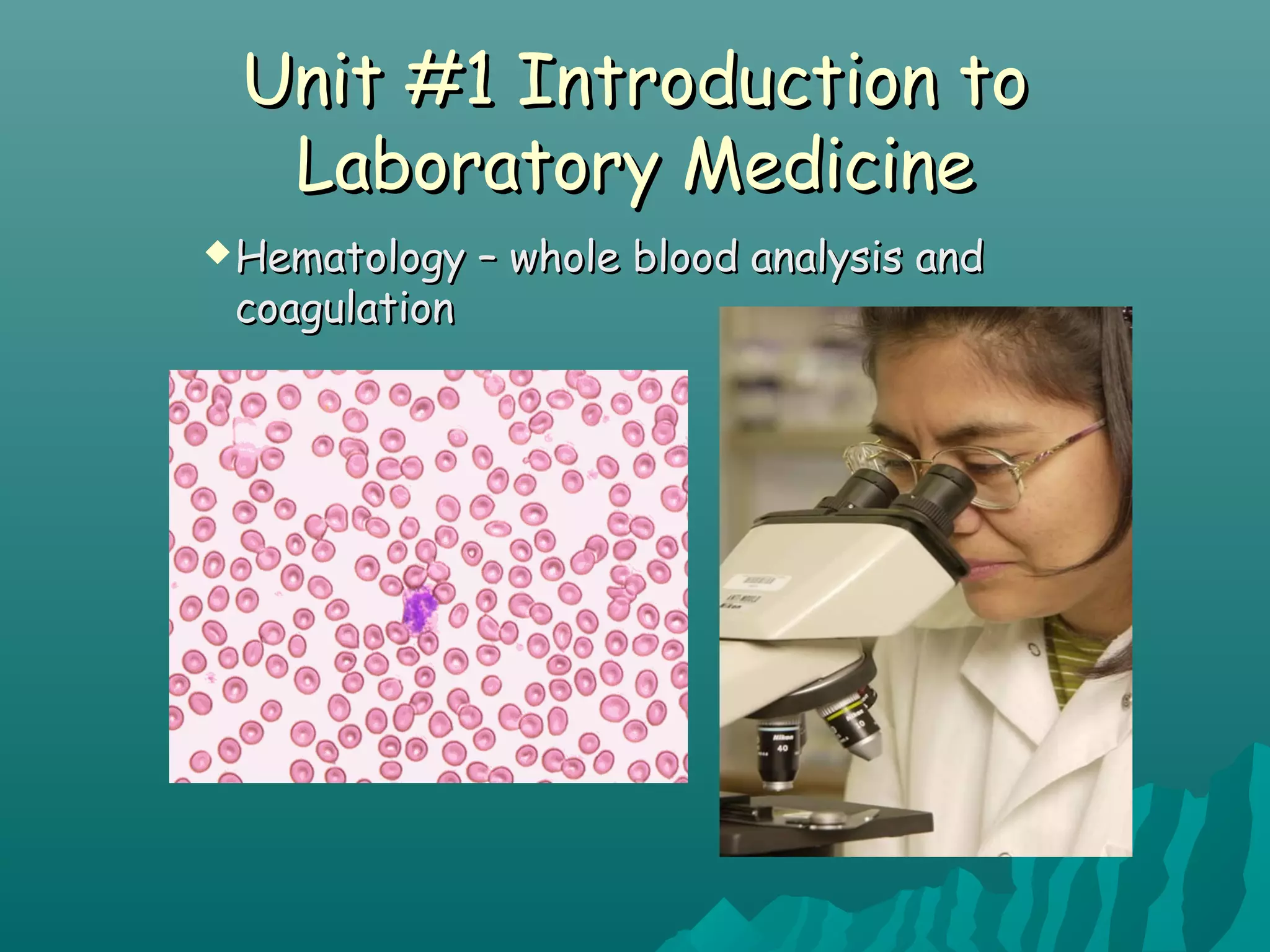This document provides an overview of clinical laboratory science. It defines clinical laboratory science as a profession that provides medical information through analytical testing of body substances to aid in disease prevention, diagnosis, and treatment. The document outlines the history and organization of clinical laboratories, including the roles of key personnel like medical laboratory technicians and medical laboratory technologists. It also describes the educational requirements to work in various clinical laboratory roles.






































